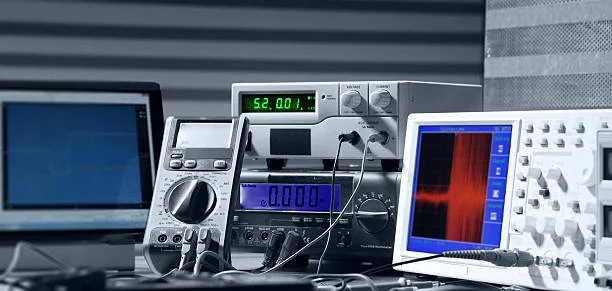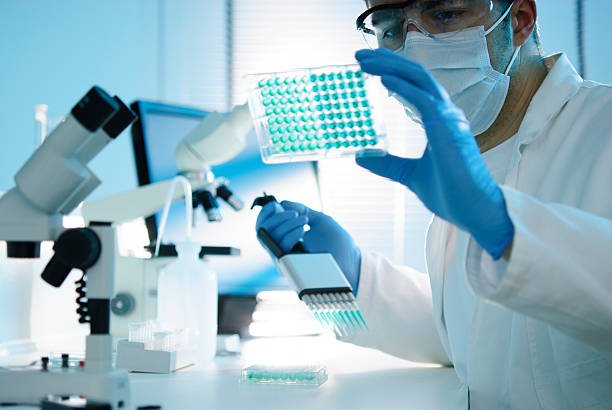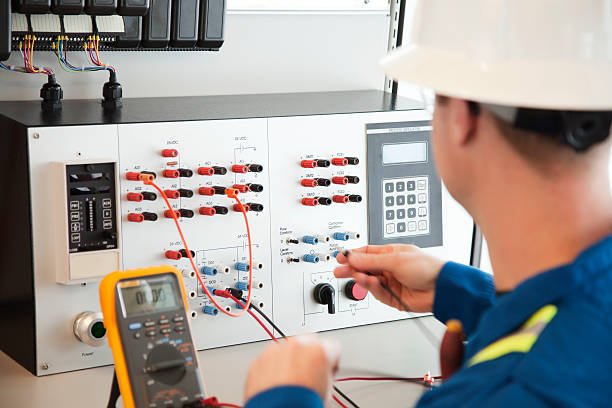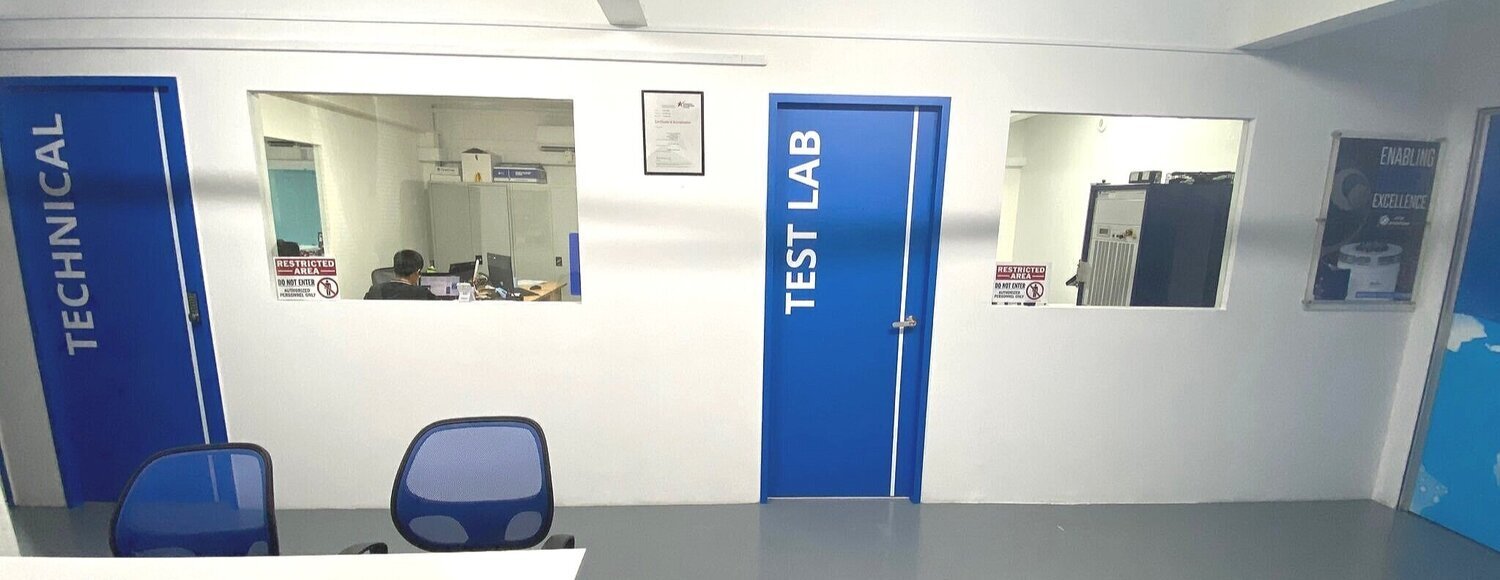Various Types of Calibration
If you are a technician or engineer working in the vibration and measurement field, for sure you are very familiar with calibration and the equipment that needs to be calibrated periodically. Wherever measurements are important, calibration is extremely important too as it allows users and businesses to have confidence in the results that they monitor and record.
But let’s see first what calibration actually means?
The formal definition of calibration by the International Bureau of Weights and Measures (BIPM) which is the coordinator of the worldwide measurement system and is tasked with ensuring the worldwide unification of measurements, is the following: "Operation that, under specified conditions, in a first step, establishes a relation between the quantity values with measurement uncertainties provided by measurement standards and corresponding indications with associated measurement uncertainties (of the calibrated instrument or secondary standard) and, in a second step, uses this information to establish a relation for obtaining a measurement result from an indication."
A basic definition of calibration is that calibration is the process of comparing a device under test (DUT) of an unknown value with a reference standard of a known value.
Calibration of an instrument in its purest sense is the process of determining its accuracy.
The reference standard may be also referred to as a “calibrator”, is more accurate than the device to be calibrated, and is normally traceable to a national/international standard held by a national metrology body.
Types of Calibration
Measurement equipment calibration can be carried out on different types of instruments across different sectors.
Let’s see some of the most frequently performed types of calibration:
1. Pressure Calibration
Pressure calibration is a key function across multiple industries where measurement equipment is used to monitor process performance and safety, typically measuring gas and hydraulic pressure.
Nowadays, many companies are certified to quality standards such as the ISO9000. There are numerous quality procedures in order to maintain quality standards, and because many industrial processes rely on the measurement of pressure, pressure calibration plays an important part in a company’s quality assurance.
For carrying out pressure calibration are used numerous types of pressure balances and calibrators are together with high accuracy pressure sensors and pressure gauges.
A few examples of pressure instruments that are regularly calibrated are:
Digital Pressure Gauges
Digital Indicators
Transducers
Transmitters
Analogue Pressure Gauges
Barometers
Test Gauges
2. Temperature Calibration
In all processes where temperature readings have a critical role, temperature calibration is conducted and is carried out in a controlled environment.
In the process of temperature calibration, thermistors, thermocouples, or Platinum resistance thermometers (PRTs), also called resistance temperature devices (RTDs) are usually used.
To note that simply reading the temperature from a temperature sensor using an RTD or a thermocouple indicator and then checking the in-line field indicator to see if the reading is the same is not a temperature calibration. A temperature calibration can only be performed by comparing a known standard, in a stable temperature environment to the probe being tested.
A few examples of equipment that require temperature calibration on a periodic basis are:
Data Acquisition Systems
Thermometers/Thermocouples
Dial Thermometers
Chambers/Furnaces
Infrared Meters
PRTs and Thermistors
Thermal Cameras
3. Flow Calibration
A flow meter (or flow sensor) is a test device used to measure the linear, nonlinear, mass, or volumetric flow rate of a liquid or a gas. The flow rate refers to the speed at which process fluid is moving through pipelines, orifices, or vessels at a given time, and control and instrumentation engineers need to measure this value in order to monitor and regulate the speed and efficiency of industrial flow processes and devices.
Flow equipment that works at peak performance helping maximize productivity, and profitability and meet regulatory requirements need to be calibrated periodically.
Flow calibration services need to be carried out periodically for these flow meters that check product or feedstock quality and quantity, fuel/energy quantity, or function in a critical process, to ensure that measurements are accurate allowing operations to proceed in a safe and timely manner.
The four main types of flow meters that frequently require calibration are:
Thermal Mass Flowmeters
Laminar Flowmeters
Rotometers – Gas and Air
Turbine Meters
4. Pipette Calibration
For laboratories that frequently use this measuring instrument, pipette calibration is essential for accurate and precise pipetting results. All various types of pipettes that are being used in the laboratories: single-channel, multi-channel manual pipettes, and electronic pipettes need to follow several aspects of the calibration process and protocols.
The main objective of pipette calibration is to ensure that dispensing is carried out with the intended accuracy.
5. Electrical calibration
Electrical calibration refers to the process of verifying the performance of any instrument that measures or tests electrical parameters such as voltage, current, resistance, inductance, capacitance, time, and frequency.
Electrical calibration requires the use of precise devices or calibrators that evaluate the performance of key properties for other devices called units under test (UUTs).
Instruments that are often sent for electrical calibration are:
Data Loggers
Electrical meters
Multi-meters
Oscilloscopes
Frequency Counters
Insulation Testers
Loop Testers
6. Mechanical calibration
Mechanical instruments are subject to drift due to regular usage, mechanical shock, and exposure to varying atmospheric conditions, as such mechanical calibration is needed. During mechanical calibration factors like mass, force, dimension, angle, volume, flatness, torque, and vibration are calibrated in a temperature-controlled facility.
A few of the most frequently tested instruments for mechanical calibration include:
Accelerometers
Scales/Balances
Load Cells & Force Gauges
Micrometers, Verniers, Height Gauges
Torque Wrenches & Screwdrivers
Weight & Mass Sets
No business can afford for its measurement instruments or equipment to provide false or inaccurate readings during use, which is why customers from various industries, from the aerospace to electronics, pharmaceutical, and other industrial sectors, have turned to AscendTech for our:
Ability to provide calibration services in our ISO17025 Accredited Testing & Calibration Laboratory
Quick response time, competitive prices, and quality service
AscendTech uses state-of-the-art equipment to ensure the highest degree of measurement confidence. With this equipment and the expertise of our technicians, we are able to offer you the best possible turnaround time, and pricing in the industry for your calibration needs.
AscendTech ISO17025 Accredited Calibration Laboratory can help you calibrate:
Vibration sensor calibration
Vibration controller calibration
Vibration meter
Environmental chamber calibration
Why send your equipment to us for calibration?
Because we don’t only calibrate your equipment but before starting the calibration we give special attention to the design of the instrument which is to be calibrated and we follow the instructions specified for calibration, otherwise deviation from instructions or use of a wrong calibrator value may influence the accuracy.
Another important value to check is tolerance. Every calibrator has a particular tolerance level due to the normal variations in the instrumentation and quality control process that can vary based on the industry sector or country where the calibration process is carried out.
Another critical factor in the calibration process is maintaining the accuracy ratio, meaning the accuracy of the test standard in comparison to the accuracy of the instrument which is to be calibrated. It is crucial to ensure at least a 3:1 accuracy ratio, meaning that the accuracy of the standard should be at least three times greater that the instrument which is to be calculated.
Of course, adhering to standards is a must for an accredited ISO17025 testing and calibration laboratory.
And once your equipment has been calibrated, we don’t stop there. In order to evaluate any factor that may have affected the results of the calibration, we do an uncertainty analysis.
Calibration of measurement instruments is not just desirable, it is kind of a necessity. All measuring instruments, whether they are used in manufacturing plants or laboratories, need to be calibrated on a periodic basis to ensure they are offering accurate results.
Whatever the scope, measurement results are usually of a critical value. Deviation from accuracy can not only affect productivity but also your cost and reputation. Therefore, it is imperative that instrument calibration need to be carried out carefully and at regular intervals.
Better to always remember:
“All measurement instruments measure wrong and calibration tells how wrong they are.”
How Can We Help You?
Interested in our Testing & Calibration services?
Send us your inquiry via the Testing & Calibration Lab Form and we will be pleased to help you.








